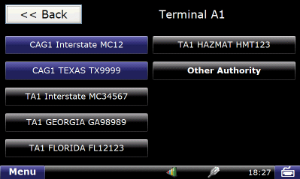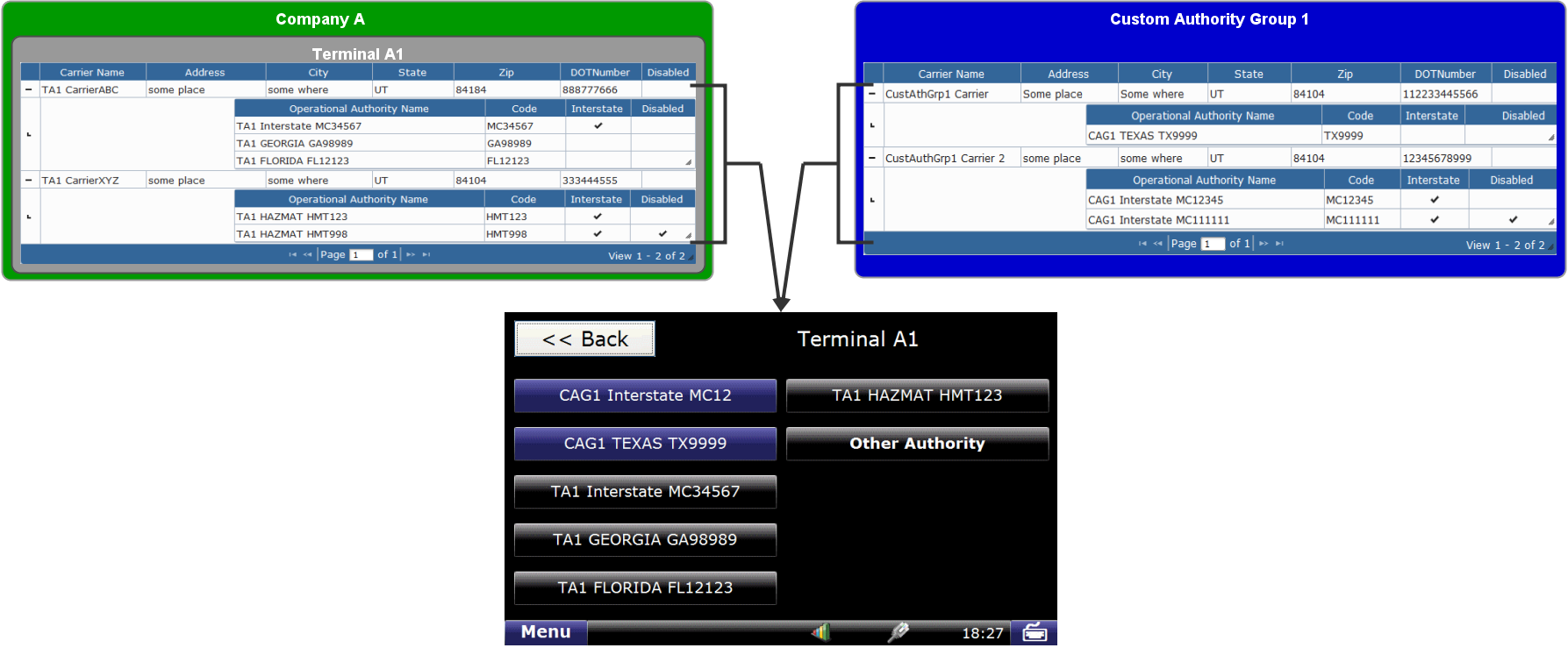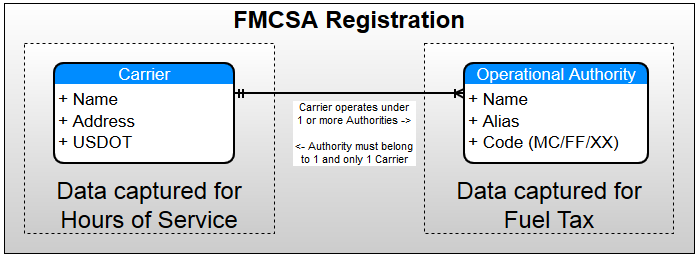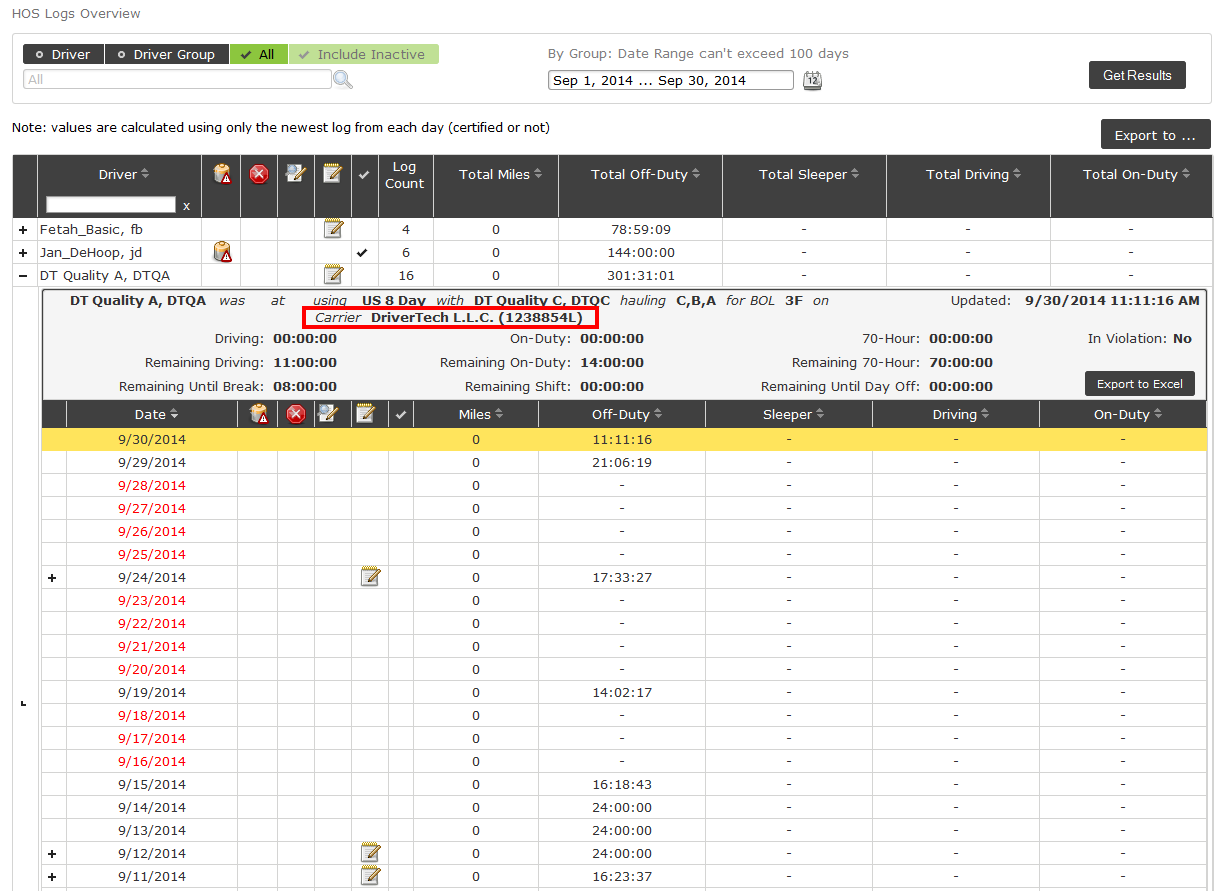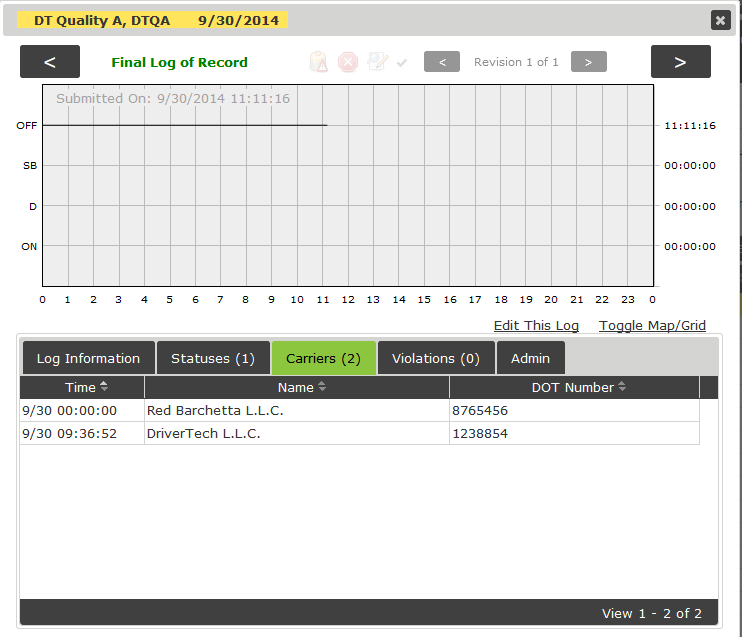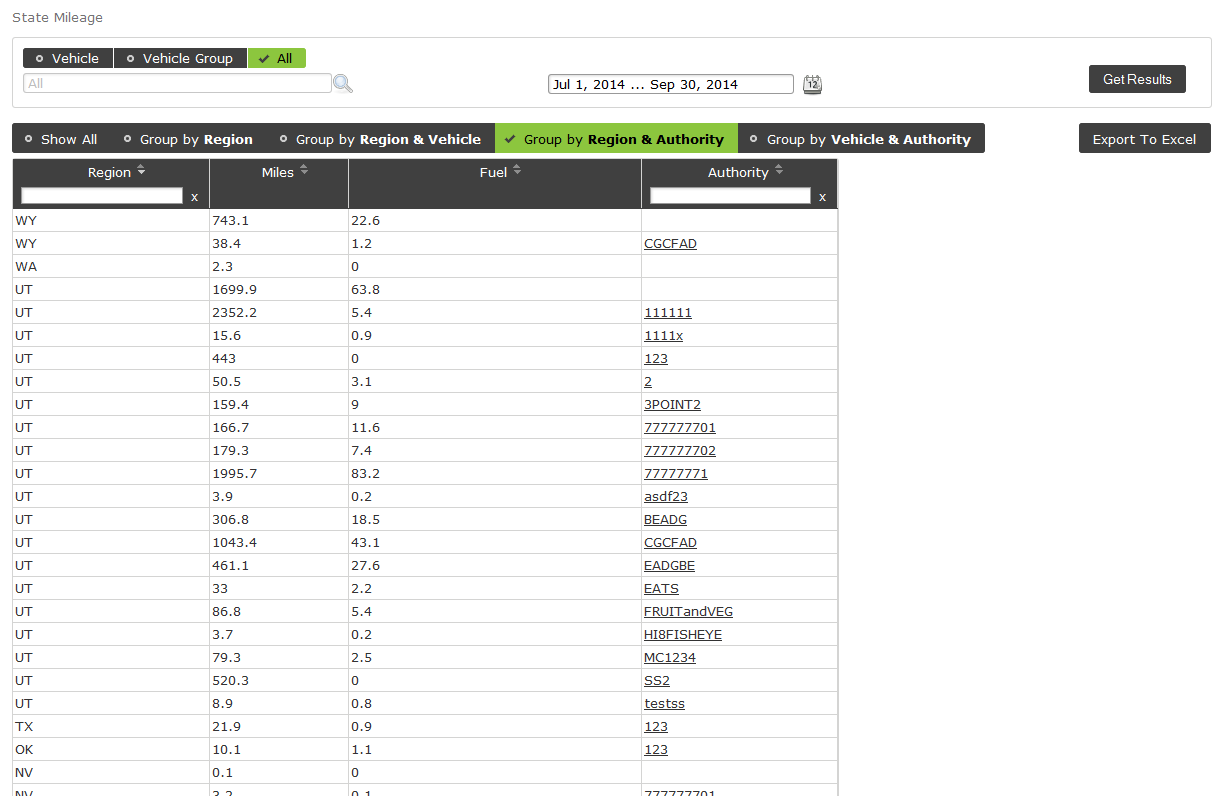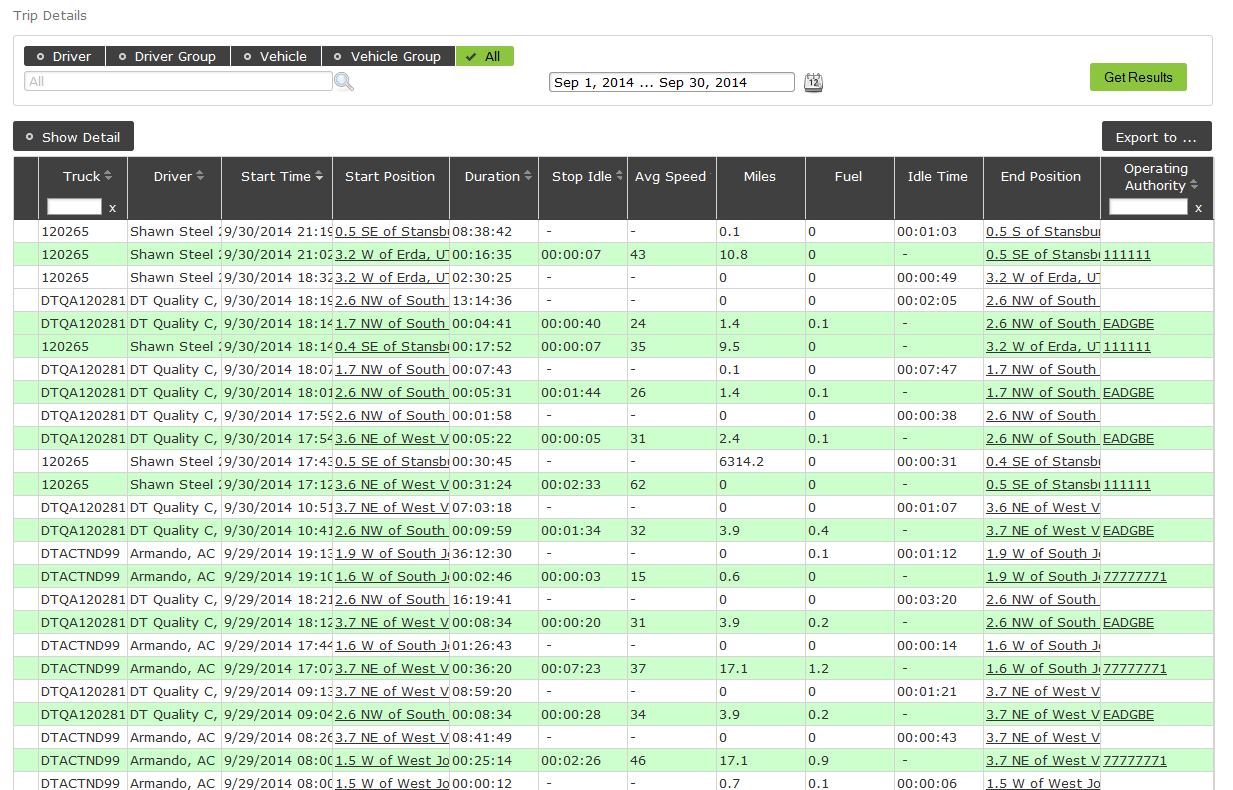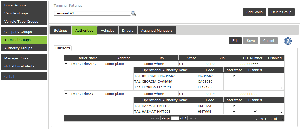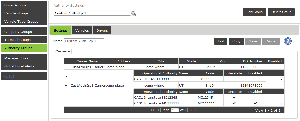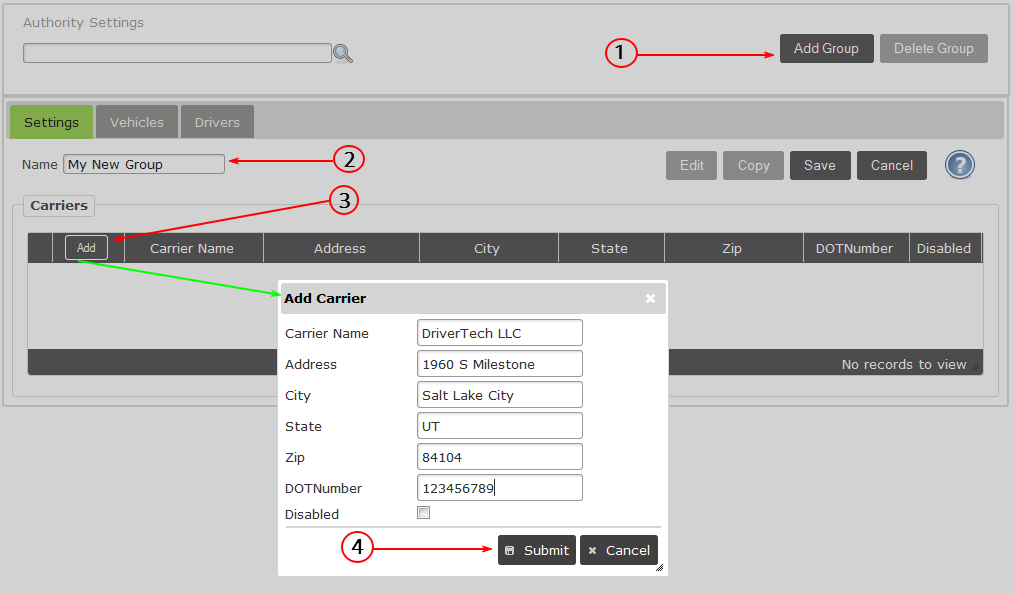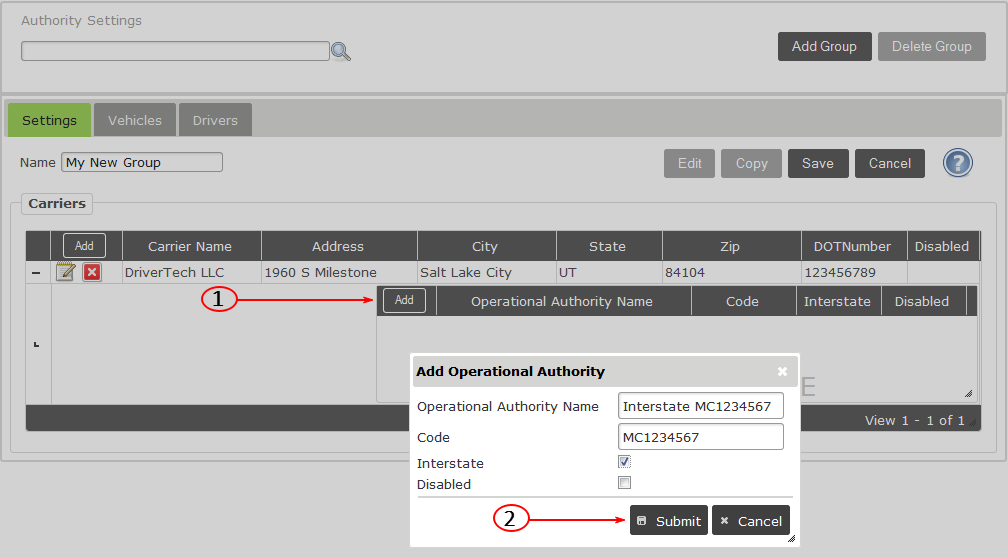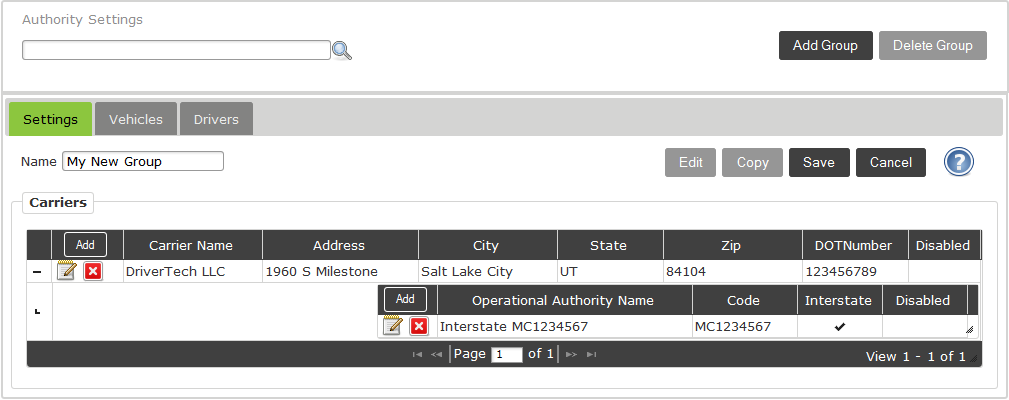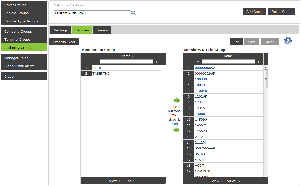...
Reporting of Carrier and Authority use is easily accomplished either by Hierarchical Reporting or by Custom Groups as the following images illustrate: Hierarchical , Custom Group
...
Feature Requirements
| Version(s) | Additional Detail |
|---|---|---|
| ELD | v5.48+ | |
| Portal | Current | |
| Web Services for Integration | DataService 2.1 | Carrier included on records from the following Operations:
Operational Authority included on records from the following Operations:
|
Multiple Operating Authority Features
We recommend that you have a firm understanding of FMCSA Registrations before continuing, Click here for a background on FMCSA Registrations
...
Both options allow multiple Carriers with multiple Operating Authorities
Registration configuration may be duplicated, in whole or in part, between Terminals and/or Custom Groups
- Registrations configured on the Terminal will be presented to any Driver logging onto an ELD assigned to that terminal
- Registrations configured on the Authority Group require both the Driver and Vehicle (ELD) to be assigned to the group for the Registrations to appear during ELD Logon
By Terminal / AgentTerminal Authority extends the current Terminal Group capability to include Carriers and Authorities authorized for any Driver operating a Vehicle assigned to that Terminal.
|
| By Custom Authority GroupCustom, or Ad-Hoc, Authority Groups allow you authorize any Vehicle and Driver combination to use the Authority of the Group. The Driver will be able to select from the Authorities of a Custom Authority Group when they Log onto a Vehicle which is also in the Custom Authority Group they are assigned. Example: If some Drivers and Vehicles within the organization are Hazmat certified you can create a Custom group for Hazmat and assign applicable Drivers and Vehicles to this group no matter what Company/Terminal they are additionally assigned.
|
| Logon Authority SelectionDuring the Logon process the Driver will be presented with a list of Authorities to select from based upon your configuration. In addition, the Driver may select "Other" and manually enter a DOT and Carrier Name. |
| Note |
|---|
A Currently, a maximum of 9 authorities will be provided to the driver in addition to the ability to select "Other". The maximum number of Authorities shown at Logon may be expanded in the future Note that records for State Mileage and Trip Detail recorded when the Driver was using the "Other Authority" option will have their associated Operational Authority code set to NULL. |
...
Example Implementation
The following shows both Terminal / Agent and Custom Authority Group having multiple Carriers with multiple Operational Authorities (some disabled) being aggregated for Driver Selection during the Logon process of the Device
How the Selected Authority is applied after Logon
Once the Driver has selected an Authority and continued past the confirmation screen the Carrier and DOT will be automatically selected. The following diagram represents how the data is used
For more information see the FMCSA Registration detail document
The Carrier Name, Address, and DOT will be applied to HOS related records (HOS Totals and HOS Logs)
The Operational Authority Code will be applied to State Mileage and Trip Detail record
Example UI showing Carrier Name and USDOT | Example UI showing Operational Authority Code |
...
click on images to enlarge |
...
Setup and Configuration
General Configuration
First, there are a few basic items to cover before adding Authority detail:
| Portal Menu: Management -> System Settings -> General Settings | Database Type | Default: Allows new ELDs to be registered without entry of a Device Registration Code which will assign the ELD to the default Terminal MOA: Requires that a Device Registration Code be entered during registration of a new ELD which will be used to select which Terminal the ELD is assigned to. This further allows your Agents to manage themselves - see Manager Roles You will need to contact support to have this setting changed | |
|---|---|---|---|
| Enable Hierarchical Reporting Groups | Enabled/Disabled: This option can be changed at any time - see Reporting Groups |
Authority Configuration
In the following we will be referring to parts of an FMCSA Registration when the term Carrier or Authority is used. Because a Registration is comprised of one or more Authorities which belong to a single Carrier, the Carrier must exist and will be automatically selected when Driver or Portal User selects an Authority. In the event that a specific Authority is not required (i.e. HosLogs) the Driver or Portal User would only be presented with a Carrier selection.
...
| Warning |
|---|
An ELD must be assigned to a Terminal for the Authority list to be presented to the Driver during Logon; it is not required that the Terminal have any Authorities configured. |
...
...
Authority Group or Terminal Authority
...
Configuration
Both Terminal Groups and Custom Authority Groups are accessed via Management -> System Settings
Terminal Group Registration Settings:
Custom Authority Group Registration Settings:
Adding Carrier and Authority Details to
...
an Authority Group or Terminal
...
Select Terminal Group or Authority Group via Management -> System Settings. The process is nearly identical both Custom Authority Groups and Terminal Groups.
Click Add Group
Enter Group NameClick the "+Add" link in the Carrier Section to add a new Carrier
- If you're adding to a Terminal, the Terminal must be 'saved' and then selected and put into 'edit' mode to enter Carrier and Authority details
Click "Submit" to set the new Carrier
After you have entered a Carrier record you will be able to follow a similar process for adding Authorities to the Carrier
Click the "Add" button below the Carrier row of which you would like to add an Authority
Click "Submit" after entering details about the Authority to set the new record
Once completed you will see something similar to the following. You may repeat the process for adding Carriers and/or Authorities as needed.
| Warning |
|---|
NOTE: the configuration will not be saved to the data center until the "Save" button above the Carriers table is clicked and confirmation provided. |
...
Assignment of Driver and Vehicle Members
...
This is only necessary for Custom Authority Group because, unlike Terminals, membership is not automatically tracked (hence, the Custom aspect of the group)
Click the Group you would like to Administer
Click the Vehicles or Drivers Tab and then Select "Edit"
Use the tools available to add or remove Vehicles from the Group
Click "Save" when your satisfied with your selections


